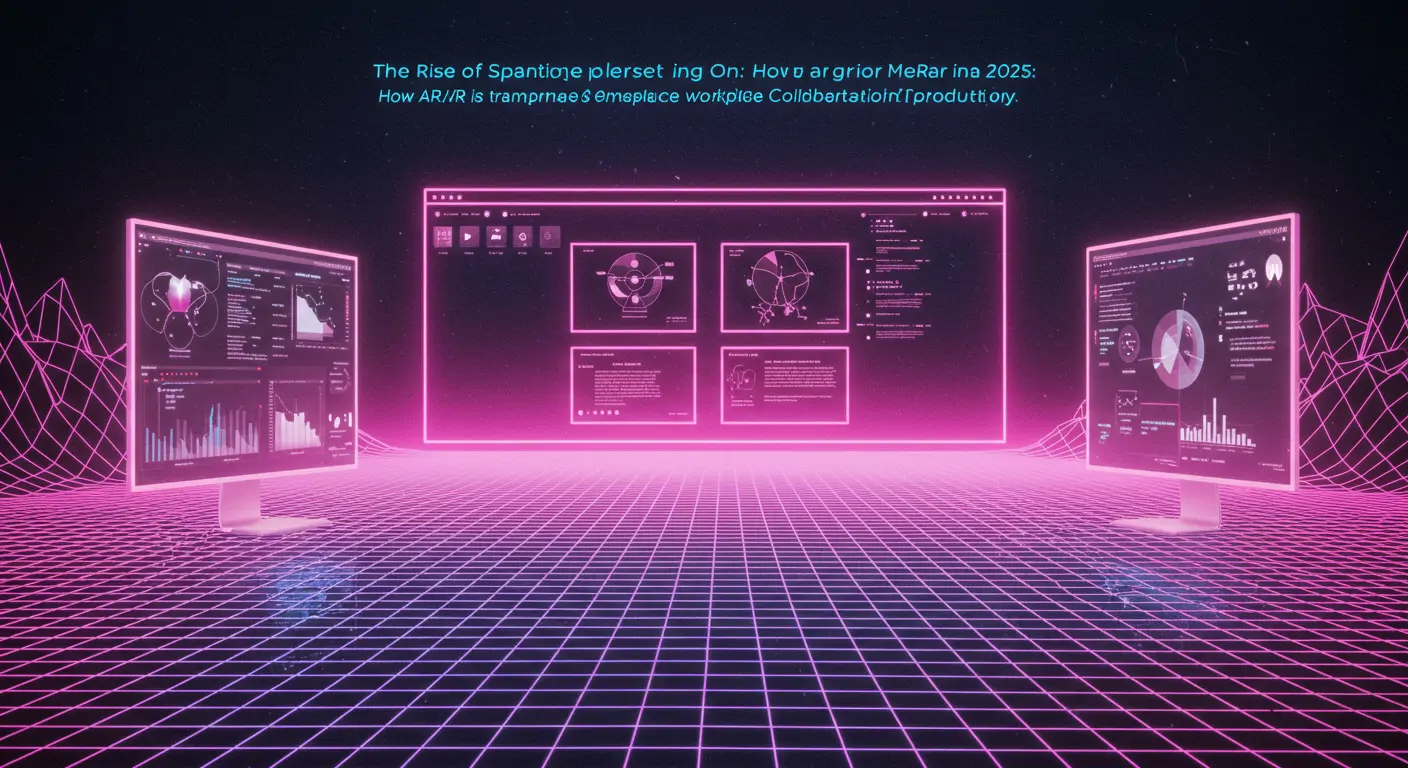Introduction: Why This Matters Now
In July 2025, Meta announced a 28% increase in productivity for teams using its Horizon Workrooms platform, showcasing the transformative potential of AR/VR technologies in workplace collaboration. Spatial computing is reshaping how we interact with digital content and each other, making it a pivotal trend for industries worldwide. As companies pivot towards hybrid work models, both employees and organizations are embracing these technologies to enhance collaboration and productivity. This trend is particularly impactful for tech-driven enterprises looking to innovate rapidly.
Read time: 10 minutes
The Current State: What's Happening Right Now
As of 2025, the spatial computing market has surged to $47 billion, up from $20 billion in 2023, driven by major players like Microsoft with HoloLens and Google's Project Iris. Recent developments include Apple's integration of AR features in iOS 18, elevating user engagement significantly. Meanwhile, traditional approaches, such as video conferencing, no longer suffice for immersive collaboration, prompting companies to seek robust alternatives.
Key Drivers: What's Fueling This Trend
Driver 1: Technological Advancements
Recent innovations in GPU capabilities have reduced latency in AR/VR applications by 40% since 2024, according to NVIDIA, making these technologies more viable for real-time collaboration.
Driver 2: Increased Remote Work
A Gartner report indicates that by Q1 2025, 58% of large enterprises have adopted AR/VR tools for remote work, highlighting the need for more engaging digital interactions.
Driver 3: Cost Reductions
The cost of VR headsets has decreased by 20% year-over-year, making the technology more accessible for businesses of all sizes.
Real-World Impact & Case Studies
Case Study 1: Boeing
- Boeing integrated VR training into its assembly process in early 2024.
- This led to a 25% reduction in training time and improved safety metrics.
- Key lesson: Immersive training can significantly enhance operational efficiency.
Case Study 2: Accenture
- Accenture deployed AR-based collaboration tools in April 2025.
- Enhanced project delivery speed by 30%.
- Key lesson: Spatial computing can streamline complex project workflows.
Industry Implications
For Developers
- Learn Unity and Unreal Engine for AR/VR development.
- Explore career opportunities in immersive experience design.
For Businesses
- Consider strategic partnerships with AR/VR solution providers.
- Gain competitive advantages by adopting early.
For Investors
- Focus on startups innovating in AR/VR hardware and software.
- Beware of high volatility and rapid technology shifts.
Challenges & Criticisms
Despite the promise, spatial computing faces skepticism regarding privacy concerns and data security. Some critics argue that VR environments can cause user fatigue, potentially impacting long-term adoption. Moreover, the technology's dependency on high-speed internet poses challenges in regions with inadequate infrastructure.
Future Outlook: What's Next
In the next 6 to 12 months, expect increased adoption of AR/VR for training and collaboration. By 2028, spatial computing could redefine entire industries, with potential milestones including the integration of AI-driven virtual assistants. To adapt, companies should invest in upskilling their workforce and exploring pilot projects.
Frequently Asked Questions
- What is spatial computing?
- How does AR/VR improve productivity?
- What industries benefit most from spatial computing?
- Are there any health risks associated with prolonged VR use?
- What are the barriers to adopting spatial computing?
Conclusion: Key Takeaways
- Spatial computing is rapidly transforming workplace collaboration.
- Technological advancements are driving AR/VR adoption.
- Businesses should prepare by integrating these tools strategically.
- Stay informed about new developments in spatial computing technologies.
To learn more, explore recent studies on spatial computing and its applications in various industries.




